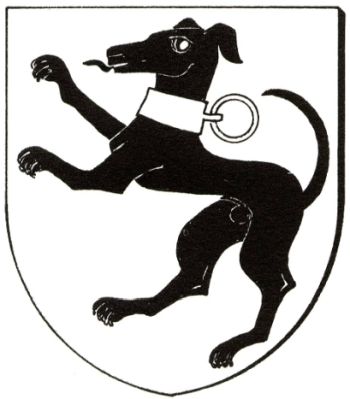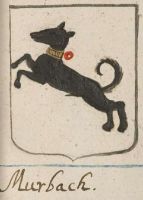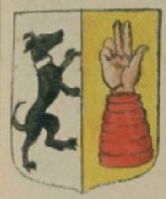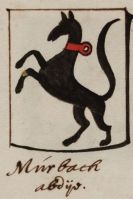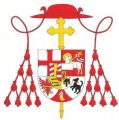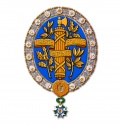Abbey of Murbach: Difference between revisions
Knorrepoes (talk | contribs) m (Text replacement - "<gallery widths=250px heights=200px perrow=0>↵" to "===Image Gallery=== <gallery widths=250px heights=200px perrow=0> ") |
Knorrepoes (talk | contribs) m (Text replacement - "===Image Gallery===" to "===Image gallery===") |
||
| Line 25: | Line 25: | ||
The origin of the dog is not known, but several theories exist. One states that it was the banner of Abbott Hugo von Rothenburg, 1216–1236. No evidence thereof exist though. Another legend states that it refers to a large greyhound dog that defended the village Wattwiller in 1525. That (local) legend ignores that the greyhound was already used before 1525... | The origin of the dog is not known, but several theories exist. One states that it was the banner of Abbott Hugo von Rothenburg, 1216–1236. No evidence thereof exist though. Another legend states that it refers to a large greyhound dog that defended the village Wattwiller in 1525. That (local) legend ignores that the greyhound was already used before 1525... | ||
===Image | ===Image gallery=== | ||
<gallery widths=250px heights=200px perrow=0> | <gallery widths=250px heights=200px perrow=0> | ||
File:Abbey of Murbach17.jpg|alt=Arms of Abbey of Murbach|The arms in a 17th century manuscript | File:Abbey of Murbach17.jpg|alt=Arms of Abbey of Murbach|The arms in a 17th century manuscript | ||
Revision as of 08:24, 3 September 2023
ABBEY OF MURBACH (Abbaye de Murbach)
Country : France
Denomination : Roman Catholic
Order: Benedictan
Established : 727
Abolished : 1789
| French | D'argent au lévrier rampant de sable, accolé et bouclé du champ. |
| English | blazon wanted |
Origin/meaning
The abbey arms are known since the 14th century.
The origin of the dog is not known, but several theories exist. One states that it was the banner of Abbott Hugo von Rothenburg, 1216–1236. No evidence thereof exist though. Another legend states that it refers to a large greyhound dog that defended the village Wattwiller in 1525. That (local) legend ignores that the greyhound was already used before 1525...
Image gallery
The arms in the Wapen- en Vlaggenboek van Gerrit Hesman (1708)
Arms of Abbots
- No image
Peter von Ostein (1428–1434)
- No image
Dietrich von Hus (1434–1447)
- No image
Bartholomäus von Andlau (1447–1476)
- No image
Achatius von Griessen (1476–1489)
- No image
Walter Mönch von Wilsberg (1489–1513)
- No image
Georg von Masmünster (1513–1542 )
- No image
Johann Rudolf Stoer von Stoerenberg (1542–1570)
- No image
Johann Ulrich von Raitenau (1570–1587)
- No image
Wolf Dietrich von Raitenau (1587)
Andreas von Österreich (1587–1600 )
- No image
Johann-Georg von Kalkenried (1600–1614)
- No image
Leopold von Österreich (1614–1625 )
- No image
Leopold Wilhelm von Österreich (1626–1662 )
- No image
Karl Joseph von Österreich (1662–1664)
- No image
Franz Egon von Fürstenberg-Heiligenberg (1664–1682 )
- No image
Felix Egon von Fürstenberg-Heiligenberg (1682–1686 )
- No image
- No image
Célestinus von Beroldingen-Gündelhard (1720–1737)
- No image
Franz Armand von Rohan-Soubise (1737–1756 )
Kasimir Friedrich von Rathsamhausen (1756–1786)
- No image
Benedikt Anton Friedrich von Andlau-Homburg (1786–1790)
Religious or Ecclesiastical heraldry portal
This page is part of the Ecclesiastical heraldry portal |
Heraldry of the World |
|
Catholic heraldry
|
Other Christian churches Other religions
|
French heraldry portal
This page is part of the French heraldry portal |
Heraldry of the World |
|
French heraldry:
Overseas territories:
|
Selected collector's items from France:
|
Contact and Support
Partners:
Your logo here ?
Contact us
© since 1995, Heraldry of the World, Ralf Hartemink 
Index of the site Image from Armorial Général de France by Hozier, 1696
